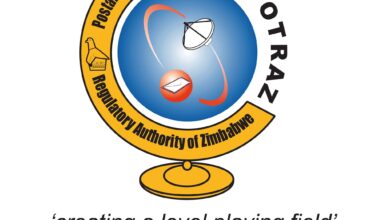Internet Penetration in Zimbabwe: Challenges and Opportunities

Internet penetration in Zimbabwe has been steadily increasing over the years. However, despite this growth, several obstacles continue to hinder widespread adoption. This article explores the current state of internet access in Zimbabwe, examining both the challenges faced by users and the opportunities for expansion.
Current State of Internet Penetration
As of January 2023, internet penetration in Zimbabwe stands at 34.8% according to the Digital 2023 report 2. This figure represents a slight improvement from previous years. However, it remains a significant challenge given the country’s population size.
Mobile phone penetration, however, is higher at 95.9% as of the third quarter of 2022 2. This discrepancy highlights the importance of mobile devices in accessing the internet for many Zimbabweans.
Economic Factors Affecting Internet Access
Additionally, economic conditions play a crucial role in determining internet access in Zimbabwe. High inflation rates and a general economic crisis have led to increased costs for internet services 2.
On 15 October 2024, 11 gigabytes of private Wi-Fi data for 30 days from Econet Wireless cost ZWG 242. This is high for the majority of Zimbabweans. Therefore, this makes internet access prohibitively expensive for many Zimbabweans.
Infrastructure Challenges
Infrastructure limitations pose significant obstacles to internet access in Zimbabwe. These include but not limited to power outages. Frequent power cuts, particularly in rural areas, severely limit internet access. In November 2022, daily 19-hour power cuts began due to droughts affecting hydroelectric power plants 2.
There is also the rural-urban divide, where most of Zimbabwe’s population (67%) lives in rural areas. This is where internet infrastructure is often lacking 1. This creates a stark contrast between urban and rural internet access. Additionally, there are bandwidth Issues. Deapite improvements, bandwidth remains a challenge, especially in rural areas 1.
Government Initiatives
The Zimbabwean government has taken steps to address the digital divide. The government launched Community Information Centres (CICs) in various parts of the country. Utilisation of old post office buildings 1. These centres aim to bring internet access to underserved communities.
Also, there is mobile network expansion. Between the second and third quarters of 2022, the number of mobile-internet base stations increased, with 139 new 3G base stations and 120 LTE base stations deployed 2. This expansion improves internet infrastructure, though disparities between rural and urban areas persist.
Impact on Education and Information Dissemination
Limited internet access affects various aspects of Zimbabwean society. Most notably is remote learning. During the COVID-19 pandemic, limited internet access became a significant hurdle for remote learning 3. Only about one-third of young Zimbabweans regularly went online, suggesting substantial challenges in implementing e-learning.
Additionally, information literacy is affected. With high rates of misinformation on social media platforms like WhatsApp, limited internet access exacerbates the spread of disinformation 1.
Finally, there is lack of access to economic opportunities. Here, restricted internet access limits opportunities for entrepreneurship and access to global markets.
Future Outlook
While challenges persist, there are signs of progress. First there is improved Infrastructure. The deployment of new mobile base stations indicates ongoing efforts to expand internet coverage 2.
Secondly, there are cost reduction efforts. The Zimbabwean government is taking steps to address concerns about high internet costs, including summoning telecom providers to discuss pricing issues 2.
Additionally, there are technological advancements. As of March 2023, median mobile download and upload speeds reached 12.95 Mbps and 6.71 Mbps, respectively, showing gradual improvements in internet quality 2.
Conclusion
Internet penetration in Zimbabwe faces numerous obstacles, primarily driven by economic factors and infrastructure limitations. However, the government and private sector are working to address these challenges through initiatives like expanding mobile networks and establishing community information centers.
As Zimbabwe continues to navigate its economic recovery and infrastructure development, the path forward for increased internet penetration appears promising. Addressing the digital divide will be crucial for the country’s future economic and social development.





